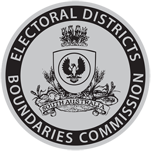The powers and duties of the Electoral Districts Boundaries Commission (EDBC) are provided in Part 5 of the Constitution Act 1934 (SA).
When making a redistribution, the EDBC must ensure that the number of electors in each electoral district does not vary from the electoral quota by more than the permissible tolerance of 10 per cent (Constitution Act 1934 (SA), section 77). The electoral quota is determined by dividing the total number of electors as at the relevant date by the number of electoral districts into which the State is divided. Since 1969 this number has been 47.
The EDBC must also have regard to matters which are outlined in section 83(2) of the Constitution Act 1934 (SA), being:
- The desirability of making the electoral redistribution so as to reflect communities of interest of an economic, social, regional or other kind
- The population of each proposed electoral district
- The topography of areas within which new electoral boundaries will be drawn
- The feasibility of communication between electors affected by the redistribution and their parliamentary representative in the House of Assembly
- The nature of substantial demographic changes that the EDBC considers likely to take place in proposed electoral districts between the conclusion of its present proceedings and the next State election
- Any other matter the EDBC thinks relevant.
Between 1991 and 2016 the EDBC was also required to have ensured, as far as practicable, that the redistribution was fair to prospective candidates and groups of candidates, so that if candidates of a particular group attracted more than 50 per cent of the popular vote, including preferences, they would be elected in sufficient numbers to enable a government to be formed (Constitution Act 1934 (SA) section 83(1)). This “fairness” criterion was unique to South Australia. Only in South Australia was consideration to be given to the political outcome of redistributions.

